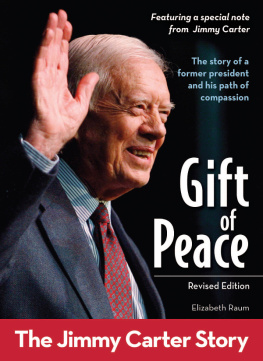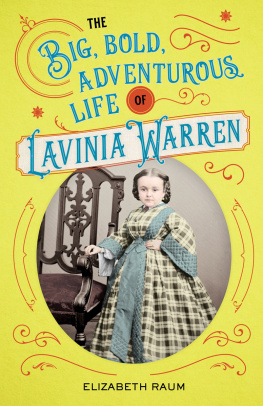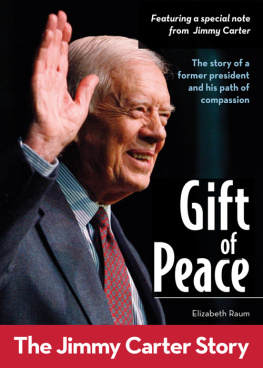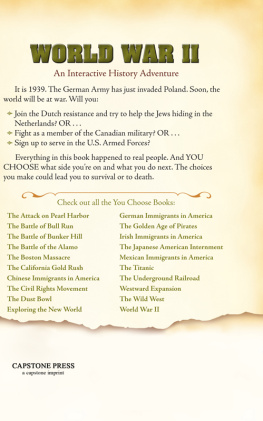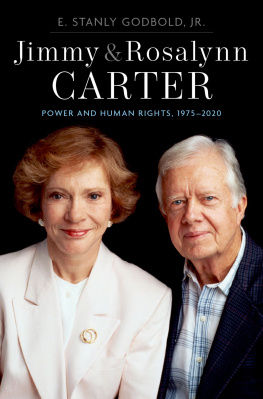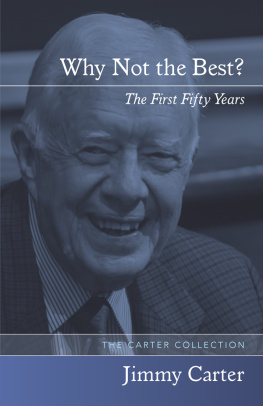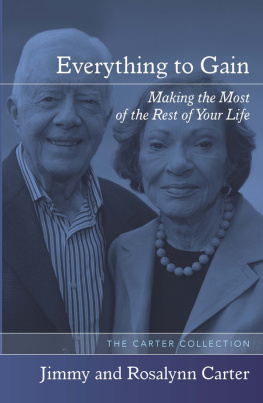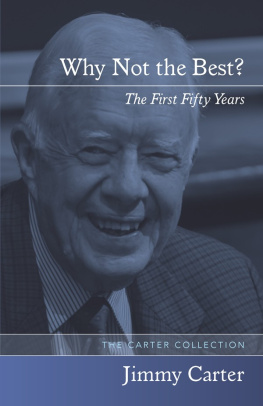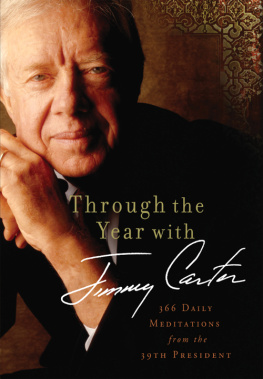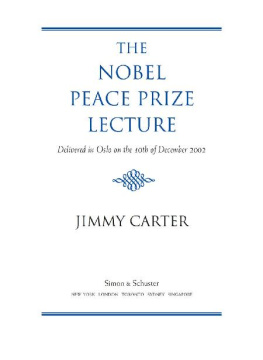

Other Books in theZonderkidz Biography Series
The Admiral: The David Robinson Story
Beyond the Music: The Bono Story
Defender of Faith: The Mike Fisher Story
Driven by Faith: The Trevor Bayne Story
Gifted Hands: The Ben Carson Story
Heart of a Champion: The Dominique Dawes Story
Linspired: The Jeremy Lin Story
Man on a Mission: The David Hilmer Story
Prophet with Honor: The Billy Graham Story
Reaching New Heights: The Kelly Clark Story
Speed to Glory: The Cullen Jones Story
Hardcover Autobiographies
Game Changer: Faith, Football, and Finding Your Way by Kirk Cousins
Grace, Gold, & Glory: My Leap of Faith by Gabrielle Douglas with Michelle Burford
Through My Eyes: A Quarterbacks Journey by Tim Tebow with Nathan Whitaker
ZONDERKIDZ
Gift of Peace: The Jimmy Carter Story, Revised Edition
Copyright 2011, 2014 by Elizabeth Raum
ePub ISBN: 978-0-310-73837-4 Copyright July 2014
Requests for information should be addressed to:
Zonderkidz, 3900 Sparks Drive SE, Grand Rapids, Michigan 49546
Library of Congress Cataloging-in-Publication Data
Raum, Elizabeth.
Gift of Peace : the Jimmy Carter Story Revised Edition/ Elizabeth Raum.
p. cm. (Zonderkidz biography series)
ISBN 978-0-310-73836-7 (softcover)
1. Carter, Jimmy, 1924 Juvenile literature. 2. PresidentsUnited StatesBiographyJuvenile literature. I. Title.
E873.R38 2011
973.926092dc23
[B]
2011024821
All Scripture quotations, unless otherwise indicated, are taken from The Holy Bible, New International Version, NIV. Copyright 1973, 1978, 1984, 2011 by Biblica, Inc. Used by permission. All rights reserved worldwide.
Any Internet addresses (websites, blogs, etc.) and telephone numbers in this book are offered as a resource. They are not intended in any way to be or imply an endorsement by Zondervan, nor does Zondervan vouch for the content of these sites and numbers for the life of this book.
All rights reserved. No part of this publication may be reproduced, stored in a retrieval system, or transmitted in any form or by any means electronic, mechanical, photocopy, recording, or any other except for brief quotations in printed reviews, without the prior permission of the publisher.
Zonderkidz is a trademark of Zondervan.
Art direction: Deborah Washburn
Cover design: Deborah Washburn
Interior design: Ben Fetterley and Greg Johnson/Textbook Perfect
Table of Contents
In 1976, Jimmy Carter ran for president of the United States, and America went nuts peanuts, that is. Few people outside of the South recognized his name. Who was Jimmy Carter? He needed a way to introduce himself to the voters, and peanuts paved the way. Jimmy ran his familys peanut business. He grew up on a farm and sold bagfuls on the streets of Georgia as a child. Jimmy chose a big smiling peanut as his airplane called Peanut One, and his supporters called themselves the Peanut Brigade. It was nutty.
Jimmy, whose full name is James Earl Carter Jr., was born at the Wise Hospital in Plains, Georgia, on October 1, 1924. Jimmy was the first United States president to be born in a hospital. Until the 1920s, most women gave birth at home. Jimmys mother, a nurse, believed that hospital births were safer for mother and baby than home births.
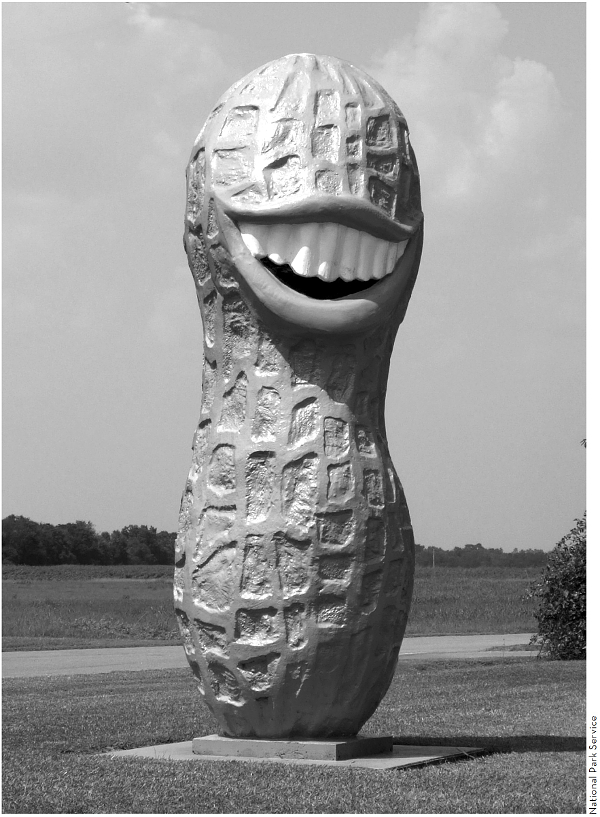
Supporters in Evanston, Illinois, welcomed Jimmy to their town by building a thirteen-foot peanut with a grin as big as Jimmy Carters. Located in Plains, Georgia, it may not be the biggest peanut sculpture in the world, but its the happiest.
Of course, there was much more to Jimmy Carter than farming. He fought for civil rights, served in the navy, and had been elected Georgias governor. He was a husband, a dad, and an active member of his church. It was Jimmy Carters honesty and willingness to help others that convinced voters to elect him president of the United States.
Today, thirty years after leaving the White House, he continues to work hard and help others throughout the nation and around the world.
First useful act
Jimmy Carter learned to help others at a young age from the influence of his parents. His mother, Lillian Gordy Carter, studied nursing at the Wise Hospital in Plains, Georgia. Thats where she met Jimmys dad, James Earl Carter Sr., a local businessman. Jimmys parents, who everyone called Miss Lillian and Mr. Earl, provided him and his sisters with a safe and loving home, first in Plains, a town of about six hundred people, and then in the smaller community of Archery, Georgia.
On the day that Jimmys dad, Mr. Earl, took Jimmy, Gloria, and Miss Lillian to see their new home in Archery, he forgot the key. It was two and a half miles back to Plains, so Mr. Earl tried to pry open a window. It was stuck, and he could only open it a crack. The narrow opening was far too small for a big man like Mr. Earl, so he slid Jimmy inside. Jimmy ran to the front door and unlocked it. Jimmy later called it his first useful act. Nothing pleased Jimmy more than being helpful.
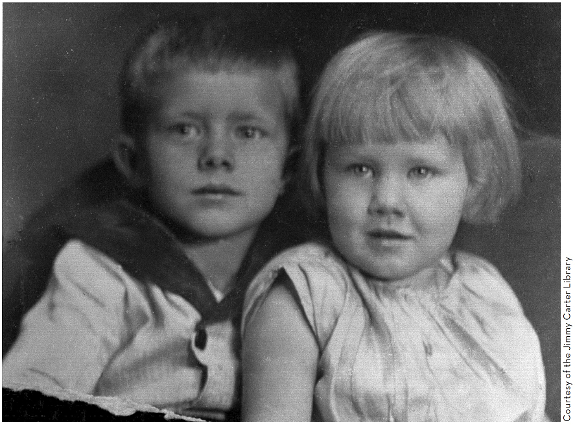
Jimmy was four years old, and his sister Gloria was two, when the Carters moved to a farm in Archery, Georgia.
At home in Archery
The Carters house in Archery was square and painted white. Cars passing by the highway kicked up so much dust that the house took on the brownish-red color of the dirt. The house had no running water or bathrooms inside. Jimmy drew water from the well in the yard and hauled it to the house for cooking, laundry, and washing up. Extra buckets of water were stored on the back porch. The family used a two-holer, an outhouse (or privy) with two holes for toilets. The larger one was for adults, and a smaller one was reserved for children it kept them from falling in! The Carters took recycling seriously long before everyone understood its importance. Instead of toilet paper, they used old newspapers or pages torn from a Sears Roebuck catalog.
Although Jimmys home wasnt big and fancy, his family was better off than many others. During the 1930s, when Jimmy was a boy, the left many people jobless, homeless, and hungry. Farms failed, factories closed, and people lost their homes to the bank. Children as young as six or seven went to work, trying to earn a few pennies for food.
The Carter house sat beside a main highway. Often, single men traveled past on their way west looking for jobs. Occasionally, entire families took to the roads seeking a better life. Homeless travelers like these were called tramps. Many stopped at the Carter home hoping to find work or something to eat. If Jimmys mother, Miss Lillian, was home, she never turned anyone away. She always gave them some food to help them on their way.
One day Miss Lillian was talking to a neighbor. Im thankful that they never come in my yard, the neighbor said.
The next time a tramp knocked on Miss Lillians door, she asked why he stopped at her house and not others.
Next page
